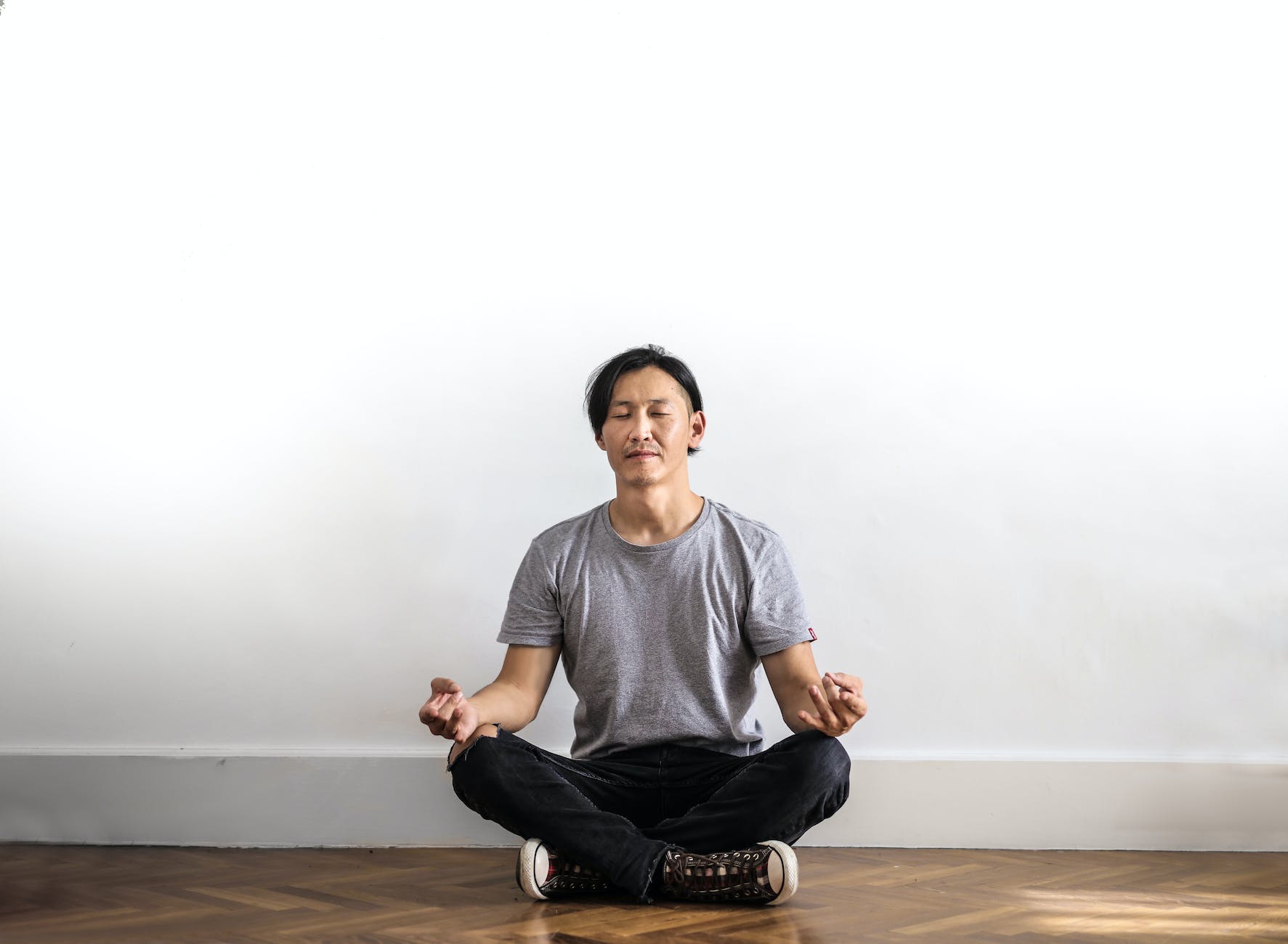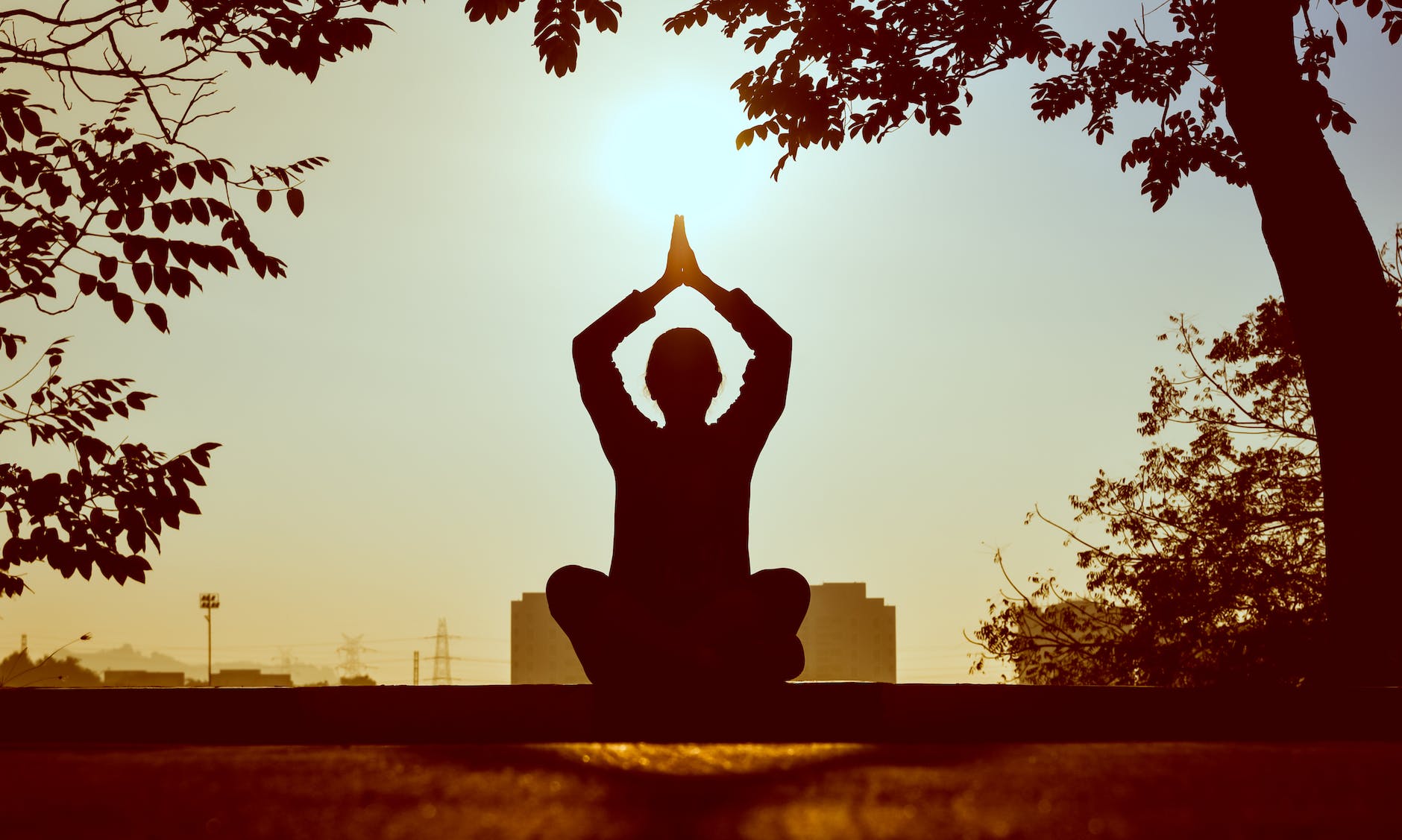- Yoga Sutras of Patanjali: A Guide to Spiritual Ascent
- 1. Unveiling Raja Yoga: The Royal Pathway to Enlightenment
- The Eight Limbs of Yoga: A Comprehensive Exploration
- Yama: Ethical Standards
- Niyama: Spiritual Practices
- Asana: The Art of Physical Postures
- Pranayama: The Science of Breath Control
- Pratyahara: Withdrawing the Senses
- Dharana: Cultivating Concentration
- Dhyana: The Journey into Meditation
- Samadhi: Enlightenment
- Anecdote: The Modern Yogi’s Dilemma
- Actionable Tips for Embracing Raja Yoga
- Conclusion to the Section
- 2. Navigating the Four Pillars: Patanjali’s Padas
- 3. Journeying Through the Eight Steps: Ashtanga Yoga Unveiled
- 4. The Relevance of Patanjali’s Wisdom in the Contemporary World
- 5. Immersing in Patanjali’s Ocean of Wisdom: A Deep Dive into the Sutras
- Conclusion: The Ever-Relevant Wisdom of Patanjali
Yoga Sutras of Patanjali: A Guide to Spiritual Ascent
The Yoga Sutras: A Beacon to Spiritual Elevation
The ancient world has bequeathed us countless treasures of wisdom, but few are as revered and transformative as the Yoga Sutras of Patanjali. A seminal guide to the spiritual and mental disciplines of yoga, this timeless classic serves as a compass for seekers on the path to enlightenment. Crafted with precision and profound insight, the Yoga Sutras not only demystify the intricate layers of yoga but also offer a roadmap for transcending the mundane and realizing the infinite.
For anyone seeking to fathom the depths of the human psyche, overcome internal barriers, or simply embark on a journey of self-discovery, Patanjali’s wisdom is an invaluable ally. His succinct aphorisms encapsulate profound truths, presenting them in a manner that resonates with novices and seasoned practitioners alike.
In the pages ahead, we shall unravel the teachings of this sage, exploring the nuances of each sutra, and delving deep into their relevance in our contemporary world. Through this exploration, you’re invited to experience the transformative power of yoga, embrace its holistic approach, and pave the way for a harmonious existence, both within and without.
Prepare to embark on a voyage of introspection, enlightenment, and profound understanding as we traverse the luminous path illuminated by Patanjali’s Yoga Sutras.

1. Unveiling Raja Yoga: The Royal Pathway to Enlightenment
Delving into the realm of the Yoga Sutras, one quickly discerns that its foundation lies in the practice of Raja Yoga. Deemed the “royal path,” Raja Yoga transcends mere physicality, directing aspirants towards the pinnacle of spiritual evolution: Samadhi.
A Step Beyond Asanas
While modern interpretations of yoga often spotlight the physical postures or asanas, the Yoga Sutras provide a holistic view. Here, yoga is an encompassing discipline, amalgamating mind, body, and spirit.
The Eightfold Path
Patanjali’s Raja Yoga is often synonymous with the Ashtanga (eight-limbed) approach, each limb elucidating a specific aspect of the practice:
- Yama: Ethical standards or moral disciplines.
- Niyama: Personal observances or spiritual practices.
- Asana: Physical postures.
- Pranayama: Breath control.
- Pratyahara: Withdrawal of the senses.
- Dharana: Concentration.
- Dhyana: Meditation.
- Samadhi: Enlightenment or a state of ecstasy.
Each of these limbs plays a pivotal role, guiding the practitioner through a transformative journey, from grounding in ethical behavior to the profound realms of meditative absorption.

The Eight Limbs of Yoga: A Comprehensive Exploration
Yama: Ethical Standards
Yamas are the moral virtues that lay the foundation for our interactions with the external world. These principles guide us to live in harmony with society, emphasizing non-violence, truthfulness, non-stealing, continence, and non-covetousness. By practicing Yama, we cultivate a life filled with integrity and purpose.
Niyama: Spiritual Practices
Niyamas focus on our inner world, guiding personal conduct and self-discipline. They encourage purity, contentment, disciplined use of our energy, self-study, and surrender to the divine. Niyamas help refine our character, fostering growth and inner stability.

Asana: The Art of Physical Postures
Asanas are physical exercises that strengthen, detoxify, and bring flexibility to the body. More than mere poses, they enhance the free flow of prana, preparing the body for deeper spiritual practices. They also teach patience, discipline, and concentration.
Pranayama: The Science of Breath Control
Pranayama goes beyond simple breathing exercises. It’s about harnessing the life force energy within. By controlling and directing this energy, we balance our physiological and mental states, setting the stage for meditation and deeper spiritual insight.
Pratyahara: Withdrawing the Senses
This stage involves drawing our attention inwards, detaching from external stimuli. By mastering Pratyahara, we gain the ability to focus our energy inward, essential for the subsequent stages of concentration and meditation.
Dharana: Cultivating Concentration
As the bridge between the external practices and internal quest, Dharana emphasizes holding one’s mind onto a particular inner state or topic. It trains the mind to become still and focused, laying the groundwork for deeper meditation.

Dhyana: The Journey into Meditation
Dhyana is not merely a practice but a state of being. It signifies profound meditation where the meditator, the process of meditation, and the object of meditation merge into one. It’s a state of pure thought and absorption, leading to inner clarity and peace.
Samadhi: Enlightenment
The culmination of the yogic journey, Samadhi is a state of superconsciousness, where the individual self merges with the Universal Self. It’s an experience of ultimate ecstasy, union, and peace, transcending the limitations of body and mind.
Together, these eight limbs offer a comprehensive roadmap for spiritual evolution, guiding aspirants from the physical to the sublime, leading them to the ultimate goal of yoga: union with the divine.
Anecdote: The Modern Yogi’s Dilemma
James, a New Yorker and finance professional, stumbled upon yoga as a stress-reliever. Initially drawn to the physical benefits, he soon found himself intrigued by the Yoga Sutras. Embracing Raja Yoga, he embarked on a comprehensive journey, incorporating ethics, meditation, and breath control into his regimen. James’s story underscores the potential of the Sutras to resonate even in today’s fast-paced world.
Actionable Tips for Embracing Raja Yoga
- Begin with Ethics: Start by internalizing the Yamas and Niyamas. They lay the ethical groundwork, ensuring that your journey is rooted in righteousness.
- Regular Practice: Dedicate specific times for meditation, ensuring consistency. Even 10 minutes daily can yield transformative results.
- Seek Guidance: Consider joining a Raja Yoga class or retreat. A seasoned guru or instructor can offer invaluable insights, ensuring that your practice is both authentic and profound.
Conclusion to the Section
The Yoga Sutras of Patanjali beckon each one of us, offering a methodical approach to self-realization. By embracing Raja Yoga, we embark on a journey that transcends the superficial, guiding us towards the luminous realms of inner harmony, clarity, and boundless peace.

2. Navigating the Four Pillars: Patanjali’s Padas
Diving deeper into the wisdom of the Yoga Sutras, one encounters a meticulously structured framework. The text is segmented into four cohesive chapters, often referred to as ‘padas’. These chapters lay down the trajectory, steering aspirants from foundational understanding to the zenith of self-realization.
Samadhi Pada: The Luminous State of Meditative Absorption
This initial segment delves into the essence of Samadhi – a profound meditative state where the individual merges with the object of meditation, experiencing unparalleled tranquility.
- Key Insight: Meditation isn’t just a relaxation tool but a method to achieve deep self-awareness and oneness.
- For the Modern Mind: In today’s digital age, where distractions are rampant, Samadhi Pada’s teachings underscore the necessity of inner silence and focus.
Sadhana Pada: The Practical Roadmap to Enlightenment
Translating to ‘means’ or ‘practice’, this chapter presents tangible tools for spiritual ascent. It introduces the revered Ashtanga or Eight Limbs of Yoga, guiding practitioners methodically.
- Real-world Anecdote: Maria, a school teacher in London, initially dabbled in yoga for fitness. However, the Sadhana Pada’s systematic approach resonated with her, transforming her casual practice into a profound spiritual journey.
- Actionable Tip: Start with Yamas and Niyamas. Ensure that your daily routine embodies these ethical and personal observances.

Vibhuti Pada: The Realm of Mystical Powers
As one progresses in yoga, certain mystical abilities, known as ‘siddhis’, might manifest. This chapter elaborates on these powers while cautioning practitioners against becoming ensnared by them.
- Key Insight: While siddhis might seem enticing, they are mere milestones. The ultimate goal remains self-realization.
- Thought to Ponder: Siddhis, when misunderstood, can lead to ego inflation. How can one ensure they remain grounded even when bestowed with such powers?
Kaivalya Pada: The Pinnacle of Liberation
The final chapter elucidates yoga’s crowning glory: Kaivalya or liberation. It paints the transformative journey from Jiva (individual soul) to Brahman (universal soul).
- Key Insight: Liberation isn’t an external achievement but an inner realization of one’s true nature.
- Reflection: Imagine a life devoid of suffering, limitations, and ignorance. Kaivalya offers a state of pure, undiluted consciousness, free from worldly bindings.
Conclusion to the Section
Patanjali, with surgical precision, carves a path for every earnest seeker. From elucidating meditation’s depths to outlining practical steps, from unveiling mystical powers to defining the ultimate spiritual culmination, the four padas stand as beacons, guiding humanity towards its inherent potential.

3. Journeying Through the Eight Steps: Ashtanga Yoga Unveiled
Patanjali’s monumental contribution to yoga philosophy can be best captured in the luminous Eight Limbs of Yoga, often termed Ashtanga Yoga. Not just a methodical progression, these eight steps are akin to the beautifully woven threads of a tapestry, each essential, and together creating a comprehensive path for an individual’s holistic evolution.
Yama: The Moral Compass
Comprising five ethical standards, Yama sets the foundational behavior for society’s harmony and personal growth. These standards, including non-violence (ahimsa), truthfulness (satya), and non-stealing (asteya), serve as a moral compass.
- Real-world Anecdote: Jake, a corporate executive, found that adhering to Yama, especially non-greed (aparigraha), transformed his relationships and improved his mental peace.
Niyama: Cultivating Inner Virtues
Five personal observances make up Niyama, promoting internal purity, contentment, and self-discipline. Saucha (cleanliness) and Svadhyaya (study of the self) are prominent aspects.
- Actionable Tip: Begin a journaling practice focusing on a different Niyama each month, noting how its integration transforms daily experiences.
Asana: The Dance of the Body
While many associate yoga mainly with postures, Asana is just one limb. However, it’s crucial, facilitating physical health and stamina, preparing the body for deeper practices.
- Key Insight: Remember, it’s not about how advanced the posture is, but how connected and present one is while practicing it.
Pranayama: Mastering the Life Force
Delving into breath control, Pranayama serves as a bridge between the body and mind. Regulating our prana or life force, it brings vitality and mental clarity.
- Thought to Ponder: Our breath mirrors our emotional state. Ever noticed the difference in your breathing pattern when calm versus agitated?
Pratyahara: The Inner Retreat
Transitioning from external to internal, Pratyahara emphasizes sensory withdrawal. By reigning in the senses, one cultivates a heightened internal awareness.
- Actionable Tip: Dedicate 10 minutes daily to sit in silence, drawing your attention inward, observing any sensations, thoughts, or feelings without judgment.

Dharana: The Art of Focus
Before delving into deep meditation, one hones concentration in Dharana. It’s about single-pointed focus, anchoring the mind to a particular thought or object.
- Reflection: In an era of multitasking, imagine the profound impact of mastering undivided attention.
Dhyana: Sailing on Meditative Waves
Progressing from concentration, Dhyana is the immersive experience of meditation. Here, the practitioner, the act of meditation, and the object of meditation become one.
- Real-world Anecdote: Lena, an artist, described her meditative sessions as the moments when her most inspired artworks were conceived, where she felt a boundless connection to her creativity.
Samadhi: Merging with the Infinite
The culmination of the yogic journey, Samadhi is a superconscious state, an experience of unity with the universe. Here, distinctions melt away, revealing the radiant essence of existence.
Conclusion to the Section
The Eightfold Path isn’t just a theoretical construct but a transformative journey. As one transitions from Yama to Samadhi, there’s an unfolding, a blossoming that touches every facet of existence. It’s a call to transcend limitations and realize the boundless potential within.

4. The Relevance of Patanjali’s Wisdom in the Contemporary World
In the age of smartphones, social media, and the never-ending hustle, the teachings of Patanjali emerge not as ancient relics but as profound reminders. They beckon modern seekers to rediscover their essence amidst the cacophony of modern life. Far beyond the bendy postures portrayed on Instagram, the essence of the Yoga Sutras is about grounding oneself, realizing the interconnectedness of all, and seeking inner contentment.
Beyond the Mat: Holistic Well-being
For many, the term ‘yoga’ conjures images of athletic poses or serene meditation spots. While asanas have brought countless benefits to millions worldwide, Patanjali’s sutras remind us that yoga is not just a physical endeavor. It’s a comprehensive approach to well-being.
- Actionable Tip: Consider setting aside 5 minutes daily for Svadhyaya or self-study. Reflect on one’s behaviors, patterns, and internal landscapes.
Ethics in an Era of Relativism
In a time when moral relativism often takes center stage, the Yamas and Niyamas offer objective standards for ethical living. They aren’t restrictive rules but principles that, when embraced, lead to harmonious relationships and internal peace.
- Real-world Anecdote: Sarah, a tech entrepreneur, integrated the principles of Ahimsa (non-violence) and Satya (truthfulness) into her company’s core values. The result? Enhanced team collaboration and a more compassionate work culture.

Meditation: The Antidote to Overwhelm
With the barrage of information and constant digital connectivity, mental clutter has become the norm. Here, the sutras’ emphasis on Dharana (concentration) and Dhyana (meditation) proves transformative. They provide tools to declutter the mind, fostering clarity and focus.
- Thought to Ponder: Imagine a world where meditation becomes as habitual as checking one’s phone. How would our collective mental health transform?
Rediscovering Unity in Fragmentation
In an era marked by divisions – be it political, social, or ideological – the core teaching of the Yoga Sutras that emphasizes the unity of all beings offers a refreshing perspective. Recognizing the underlying unity can usher in compassion, understanding, and collective harmony.
Conclusion to the Section
While the Yoga Sutras might have been penned centuries ago, their wisdom is timeless. They don’t just provide strategies for personal growth but also offer insights into addressing some of the pressing challenges of our times. Embracing Patanjali’s teachings can guide individuals and communities towards a more balanced, harmonious, and introspective life.

5. Immersing in Patanjali’s Ocean of Wisdom: A Deep Dive into the Sutras
Patanjali’s Yoga Sutras, with their crisp aphorisms, can be likened to the tip of an iceberg. While one can appreciate their surface meaning, a vast reservoir of knowledge lies hidden beneath, waiting to be explored and understood.
The Richness of Interpretation
Each sutra in Patanjali’s collection holds multiple layers of meaning. They’ve been described as condensed wisdom – simple on the surface, yet revealing profound truths upon deeper contemplation.
- Actionable Tip: Take a single sutra and contemplate it over a week. Journal your insights and observe how your understanding evolves over time.
The Role of a Guru
In traditional Indian philosophy, the guidance of a guru or spiritual teacher is paramount, especially when delving into intricate texts like the Yoga Sutras. Their lived experience, combined with a deep understanding, can illuminate the sutras’ subtleties.
- Real-world Anecdote: Jason, a software developer from Salt Lake City, initially read the Yoga Sutras on his own but found them cryptic. Upon joining a study group led by an experienced teacher, the sutras began to ‘speak’ to him, transforming his personal and professional life.
Commentaries: Bridging Past and Present
Over the centuries, numerous scholars and yogis have written commentaries on the Yoga Sutras. These texts, while retaining the original’s essence, provide contextual interpretations, making them more accessible to seekers from various backgrounds.
- Suggested Reading: Swami Satchidananda’s “The Yoga Sutras of Patanjali” and Edwin Bryant’s “The Yoga Sutras of Patañjali: A New Edition, Translation, and Commentary” are renowned commentaries that offer comprehensive insights into Patanjali’s wisdom.

Conclusion to the Section
The journey through the Yoga Sutras is not a sprint but a marathon, meant to be savored and internalized. It’s an adventure of the soul, where each sutra acts as a beacon, guiding the seeker towards deeper self-awareness and spiritual awakening. As with any profound text, the real treasure lies not just in reading but in embodying its wisdom.
Conclusion: The Ever-Relevant Wisdom of Patanjali
In the fast-paced modern world, it’s a marvel that an ancient text like the Yoga Sutras of Patanjali continues to resonate, inspire, and guide. This enduring relevance speaks volumes about the timeless nature of the wisdom encapsulated within its pages.
Patanjali’s insights touch the very core of human existence, offering a structured path to navigate the complexities of the mind and spirit. It’s not just a manual for spiritual ascension but a life-guide, addressing every individual’s innate yearning for peace, purpose, and profound understanding.

The sutras, with their succinctness and depth, are akin to a shimmering jewel, reflecting facets of truth that cater to seekers from all walks of life. Whether one is a seasoned yogi or a curious novice, the teachings provide a roadmap for self-exploration and inner transformation.
The global embrace of Patanjali’s philosophy is a testament to its universal appeal. From Salt Lake City to Singapore, from yoga studios to academic halls, the discussions, debates, and introspections around these sutras are a vibrant testament to their ageless allure.
In wrapping up, the Yoga Sutras remind us of a fundamental truth – the journey inward is the most rewarding of all quests. As we stand at the crossroads of tradition and modernity, these aphorisms beckon, urging us to embrace the eternal while navigating the temporal, guiding us towards a life of balance, purpose, and profound inner harmony.
Do not forget to check out all of our exciting free tools! Calculators, quizzes and downloadable checklists all for free.
















